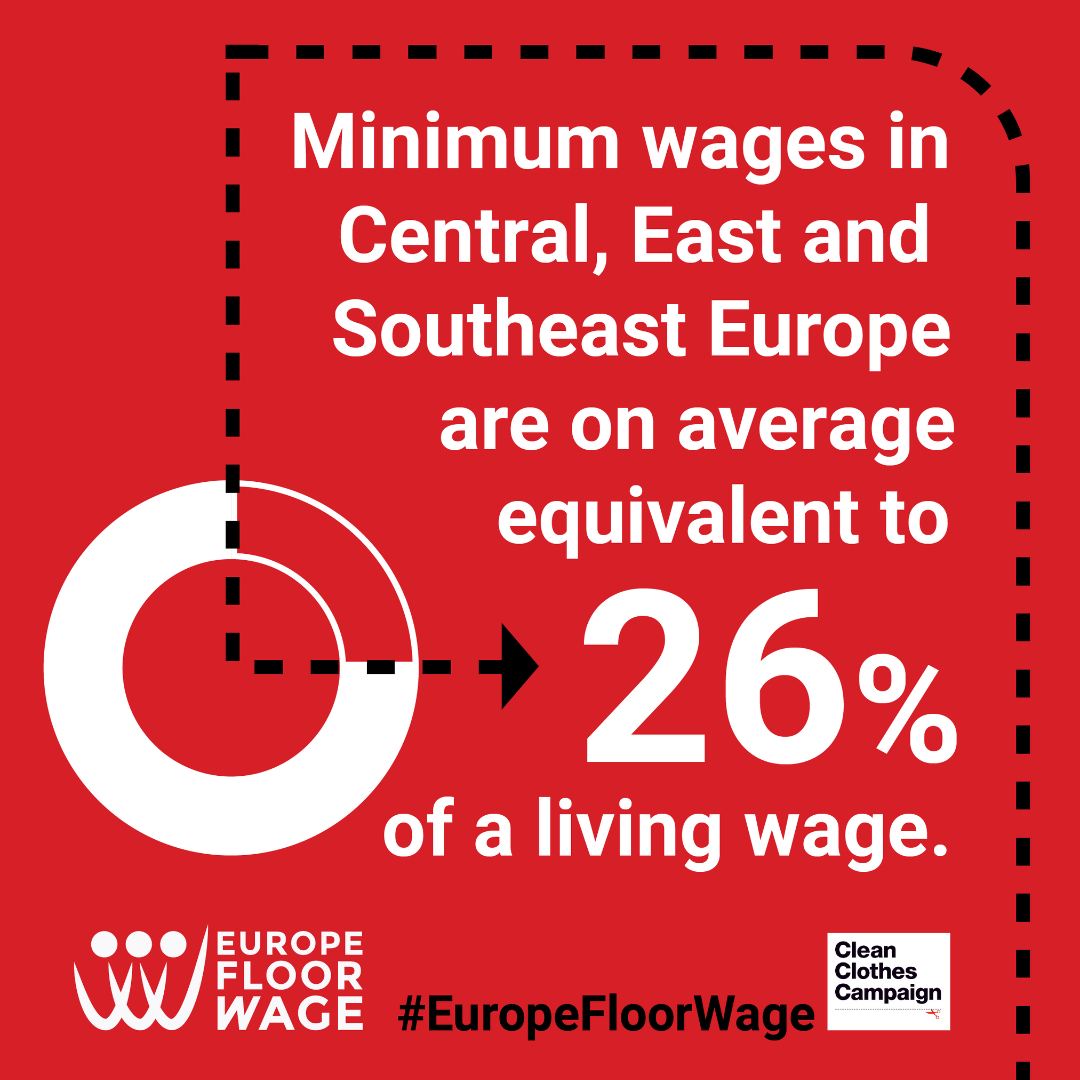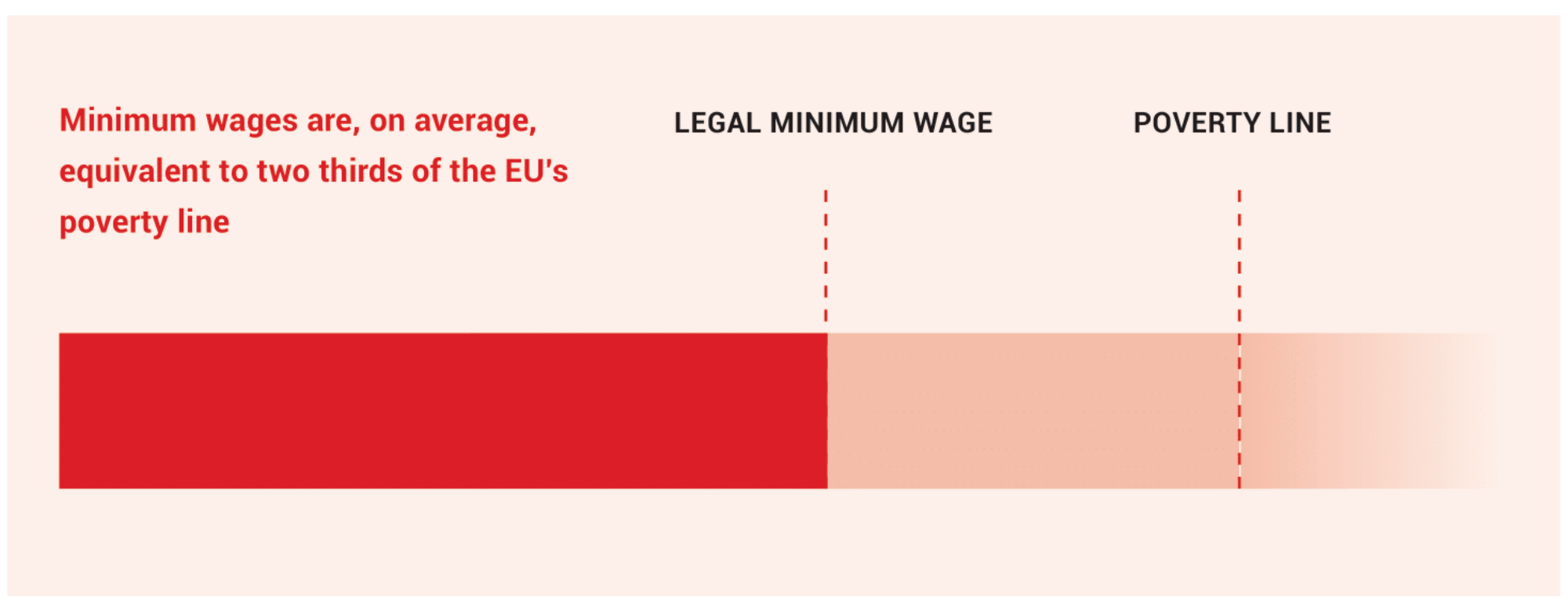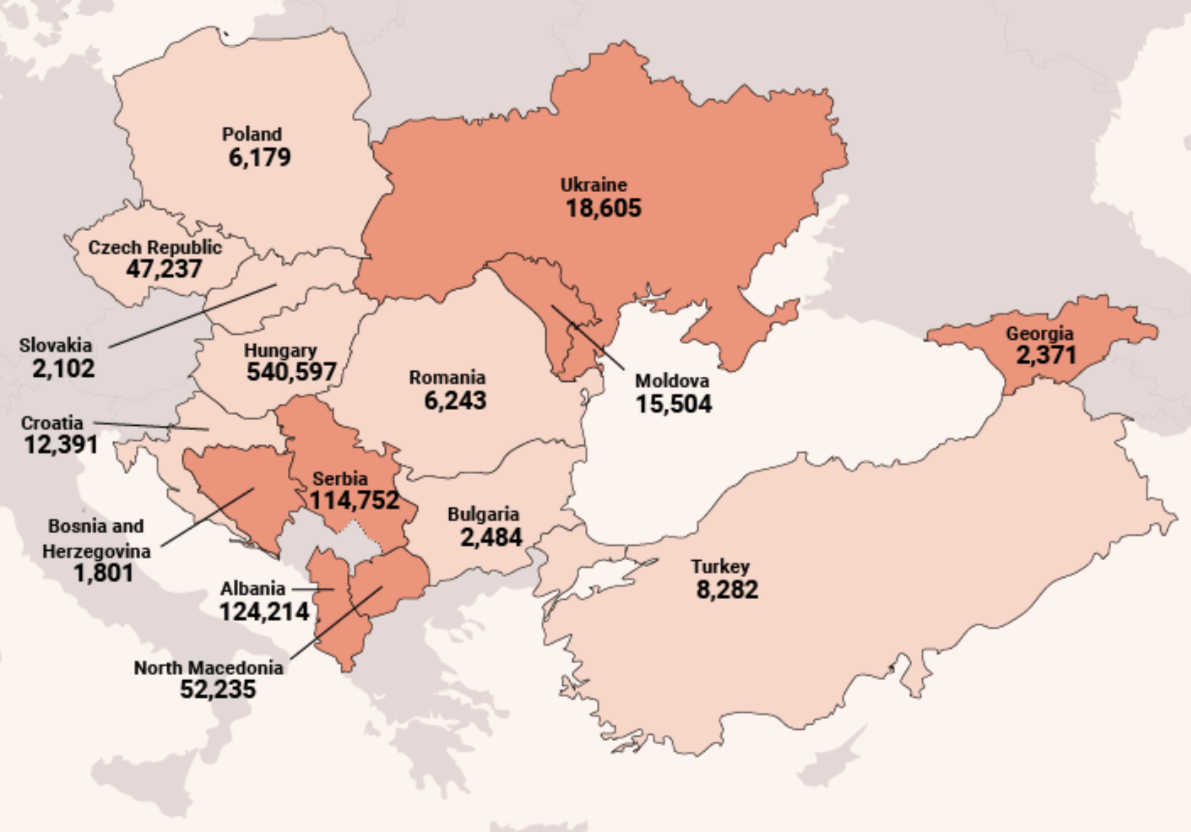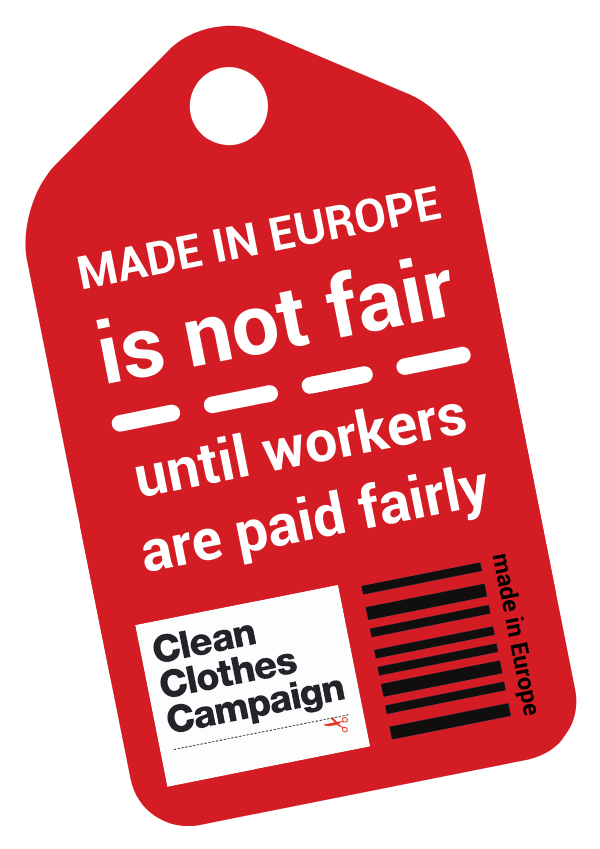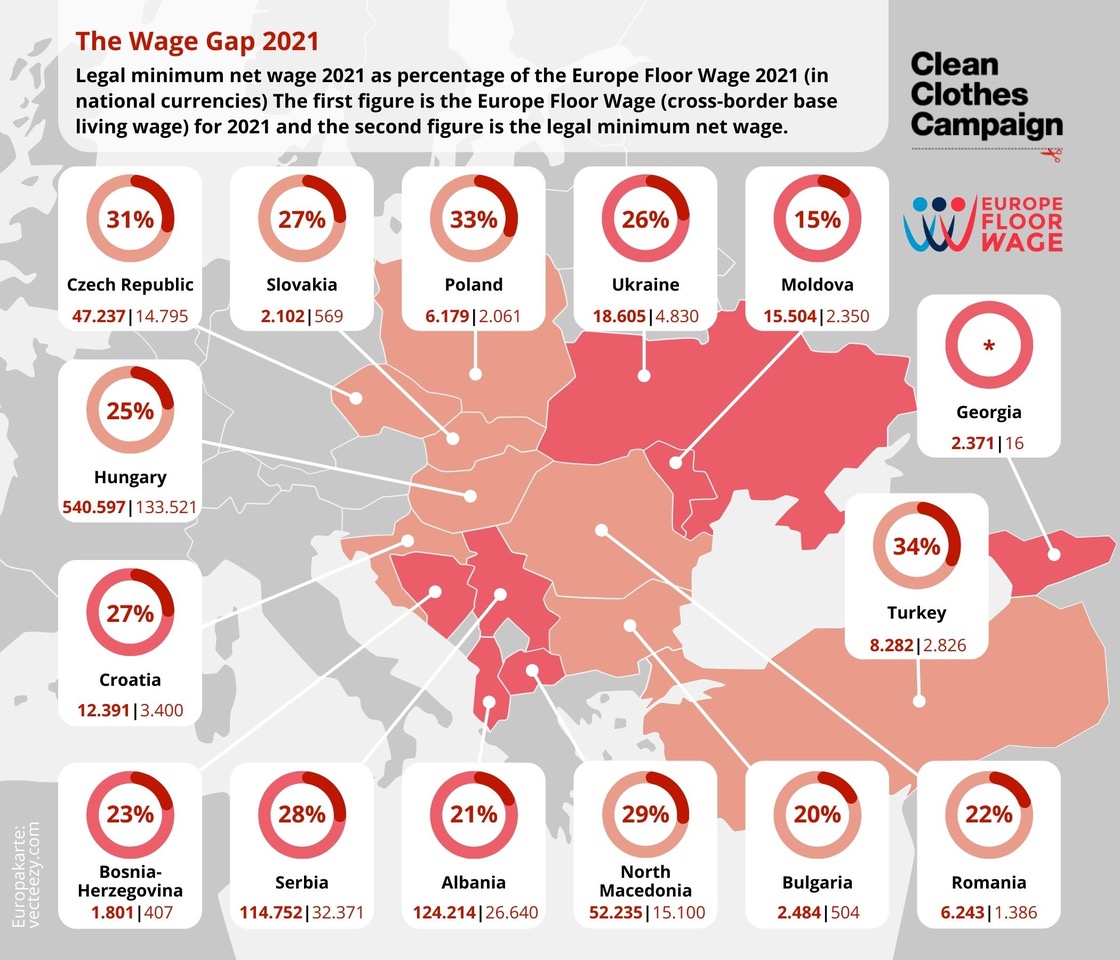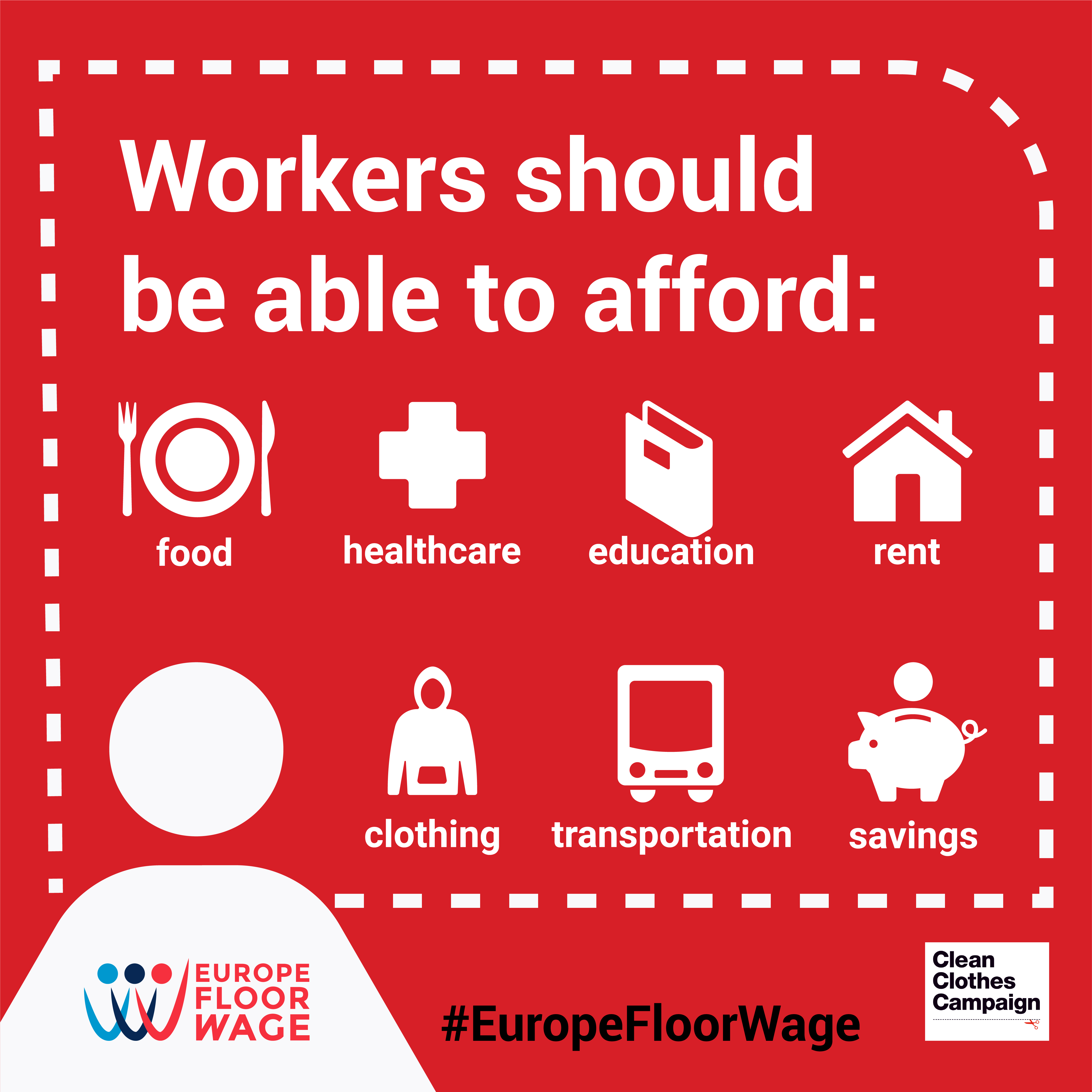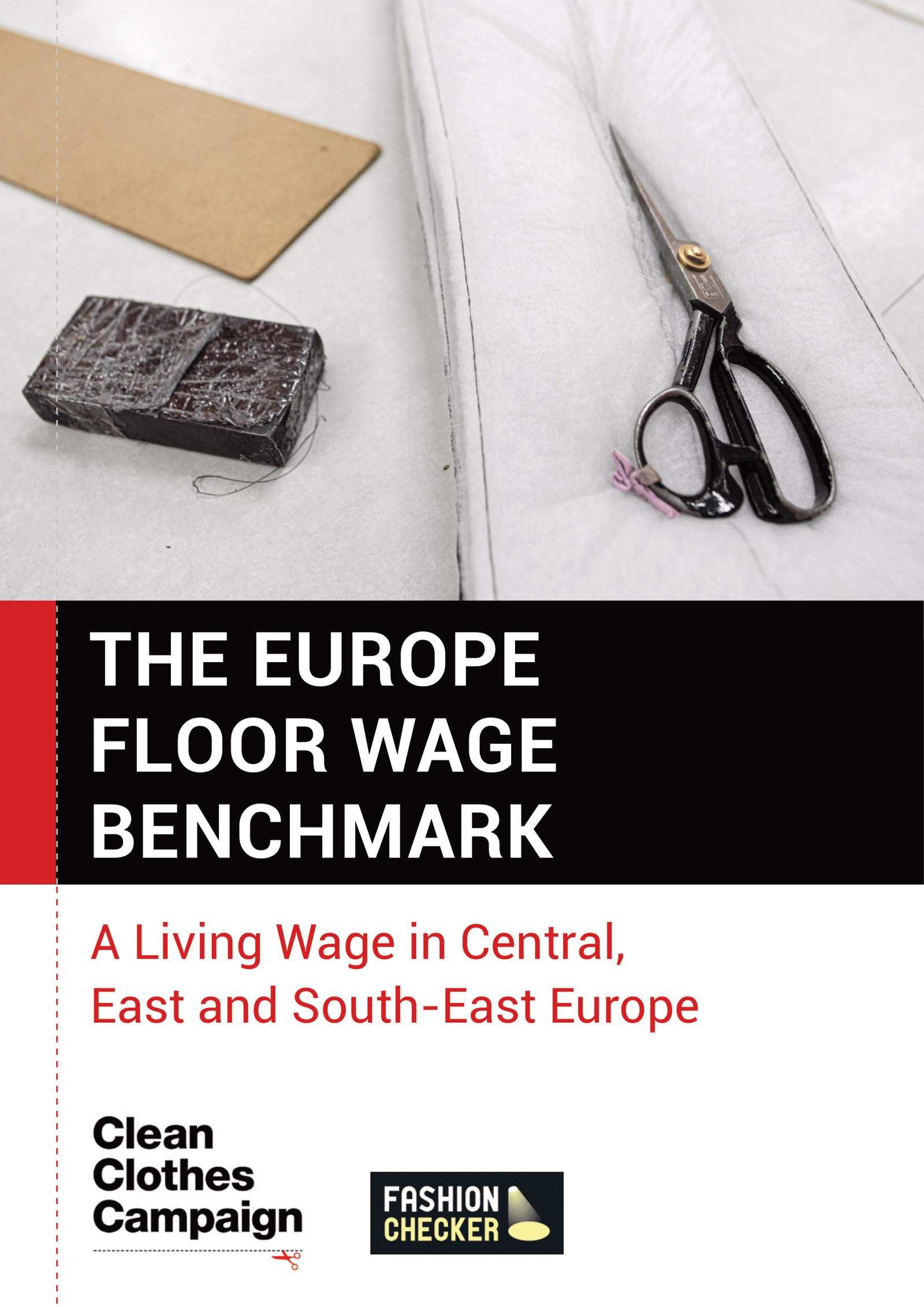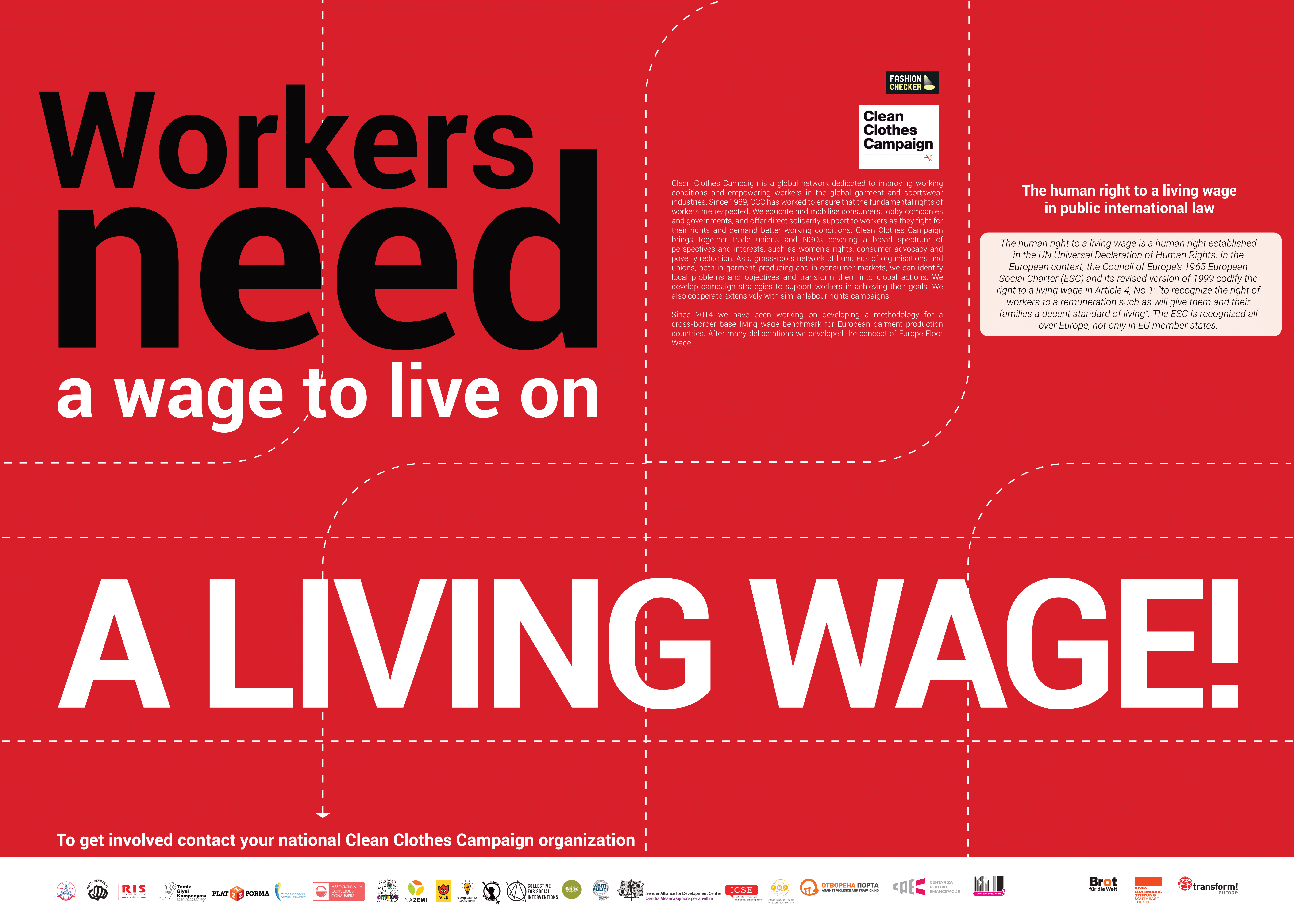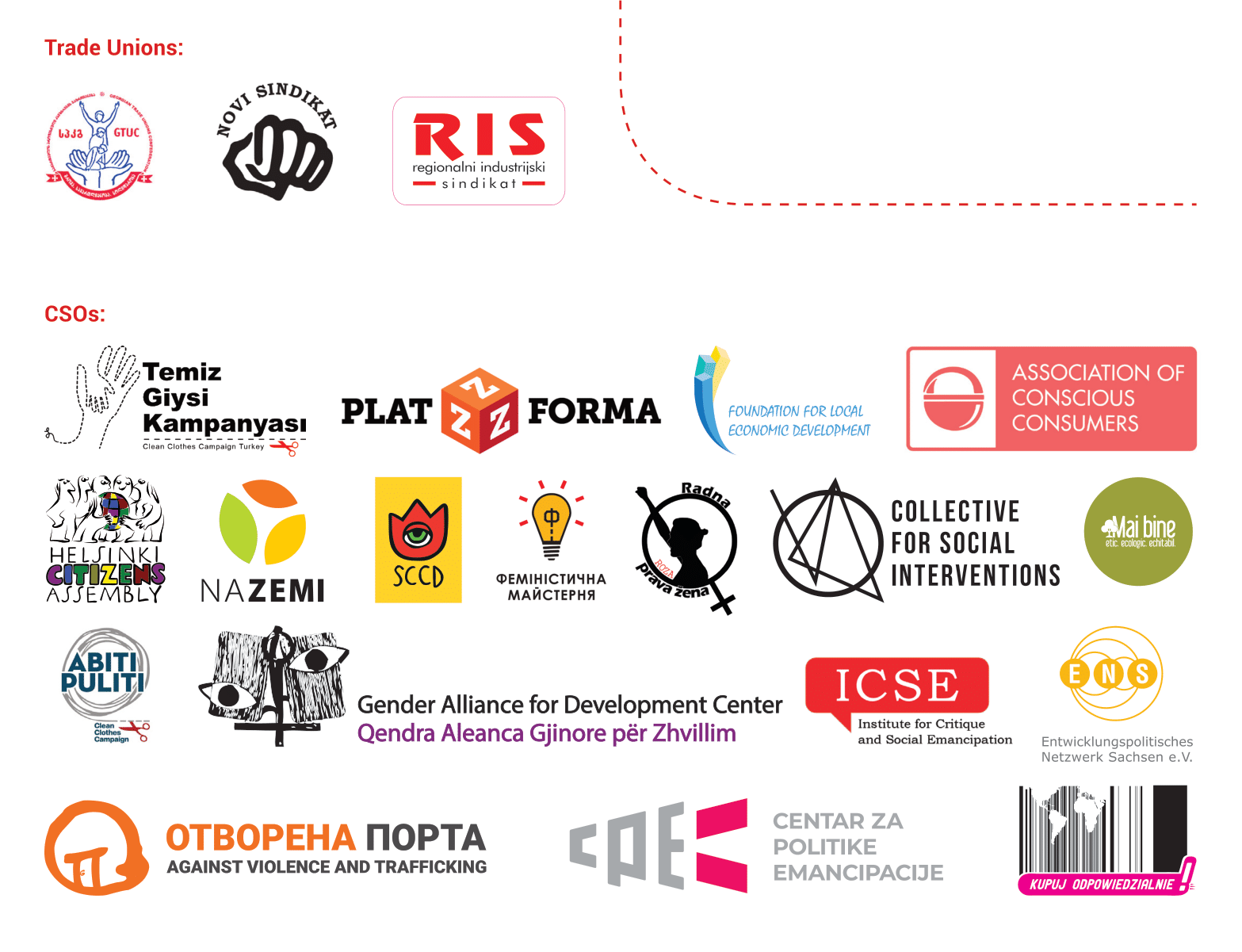Europe Floor Wage
A living wage benchmark for European garment workers.
Earning a living wage is a human right, but garment workers in Europe struggle to make ends meet on their current wages. We developed a benchmark for living wages in European countries that reflects the reality of garment production in Europe.
Why focus on a Living Wage?
Buyers should pay the full price for the production of a garment. This includes a wage that the workers making the products can live on. Earning a living wage is a human right; however, garment workers' wages in Europe are often far below the poverty line.
In fact, the gap between current wages and a living wage is often bigger in European production countries than in Asian production countries. Brands capitalise on the fact that most people are unaware of this. Consumers are offered false assurances of fairer conditions when products are "made in Europe".
How much do workers need to live on?
Living costs differ per country. We developed a cross-border benchmark for 15 European garment production countries. The infographic below shows what percentage of a living wage the legal minimum net wage pays per country. The first figure for each country represents the cross-border base living wage estimate, and the second figure is the corresponding legal minimum net wage.
*Figures from 2021.
Visit FashionChecker.org to ask your favourite brands if they are paying workers a living wage.
Read more about our proposal for a living wage at WageForward.org
Download our flyer poster for more information.
Why should a living wage be a regional concept?
In setting appropriate benchmarks for living wages in Europe, we seek to look beyond national borders. A concept that aims to put workers at its core has to take the global fast fashion business model into consideration. The power dynamics in global supply chains favour brands and retailers. While brands and retailers take the role of price setters, it is suppliers who must accept the prices offered to them.
Brands and retailers control how value is distributed along the supply chain, as well as where and when manufacturing will take place. The clothing industry, therefore, represents the quintessential example of a buyer-driven value chain. Because of the power that brands hold over their supplier through their purchasing practices, they have an extended responsibility to the workers of their suppliers. This is why brands and retailers are called principal employers.
The global fast fashion business model necessitates a policy that combats relocation competition between countries or regions. If it's cheaper to produce elsewhere, brands will relocate, and governments will keep labour wages low to attract brands to produce in their countries. With a cross-border approach, we are challenging the constant threat of relocation and preventing competition around wages.
With the Europe Floor Wage our goal is to put a floor on the 'race to the bottom' between and within European garment-producing countries. This does not mean that the Europe Floor Wage is the only possible estimate for a living wage. On the contrary: cross-border and national living wage benchmarks complement each other. This benchmark is an estimate which presents a base for negotiations and can be tailored by trade unions and labour NGOs in the work to achieve higher wages for workers in Central, East and Southeast Europe.
CCC urges the European Union to make a difference for workers through its minimum wage policy. In May 2020, CCC wrote a letter to the European Parliament's Committee for Employment and Social Affairs and the EU Commission welcoming their initiative “to ensure both that minimum wages are set at adequate and fair level and that workers have access tominimum wage protection”.

